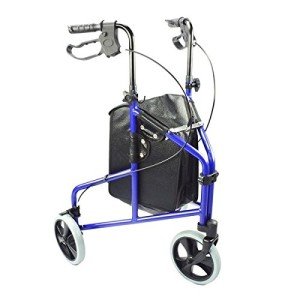outdoor-walker5854
outdoor-walker5854
The 10 Scariest Things About Medical Walker

Understanding Medical Walkers: A Comprehensive Guide
Medical walkers work as vital mobility aids for individuals recuperating from surgery, managing persistent diseases, or handling age-related mobility issues. These devices not only improve physical independence however likewise enhance safety, permitting users to browse their environments with higher ease. This post explores the types, benefits, features, and considerations connected with medical walkers, along with some often asked concerns.
Tabulation
- Types of Medical Walkers
- Benefits of Using a Medical Walker
- Key Features to Consider
- Regularly Asked Questions
- Conclusion
1. Types of Medical Walkers
Medical walkers are offered in various designs, dealing with different requirements and choices. The primary types consist of:

| Type of Walker | Description |
|---|---|
| Requirement Walker | A rectangular frame with 4 legs, offering stability and support. |
| Two-Wheeled Walker | Similar to a standard walker however geared up with wheels at the front for easier movement. |
| Three-Wheeled Walker | A lightweight walker with 3 wheels, allowing for more maneuverability, perfect for indoor use. |
| Rollator Walker | A walker with 4 wheels, hand brakes, and a seat, suitable for longer distances and resting requirements. |
| Hemi Walker | Developed for people who can use just one hand, featuring a tripod-like style. |
2. Benefits of Using a Medical Walker
Using a medical walker presents a number of benefits that add to the user’s overall well-being, consisting of:
- Increased Stability: Walkers offer a steady base of assistance, minimizing the threat of falls.
- Enhanced Mobility: They allow users to move around more easily, promoting self-reliance.
- Discomfort Relief: By redistributing weight, walkers can relieve discomfort in the joints, particularly in the hips and knees.
- Posture Support: These devices encourage appropriate posture, reducing pressure on the back.
- Boosted Confidence: Users typically feel more secure utilizing walkers, resulting in better self-esteem and increased activity levels.
3. Secret Features to Consider
When selecting a medical walker, it’s important to evaluate various functions to discover the best fit. Here are some important aspects to consider:
- Weight Capacity: Ensure the walker can support the user’s weight while preserving stability.
- Height Adjustment: Look for a walker with adjustable height settings to accommodate the user’s height and supply comfortable grip.
- Material: Lightweight aluminum walkers are much easier to navigate, while steel walkers provide stronger assistance but may be heavier.
- Wheel Quality: If deciding for a wheeled walker, think about the wheel size and tread. Larger wheels browse uneven surface areas more easily.
- Seat Availability: If users will be walking for longer periods, a walker with an integrated seat can provide rest breaks when needed.
- Brakes: Hand brakes are particularly essential for safety in rollator walkers to manage speed and stop when needed.
Kinds of Walkers with Features Comparison Table
| Walker Type | Weight Capacity | Height Adjustment | Wheels | Seat Available | Brakes |
|---|---|---|---|---|---|
| Standard Walker | As much as 300 lbs | Yes | No | No | No |
| Two-Wheeled Walker | Approximately 300 lbs | Yes | Yes | No | No |
| Three-Wheeled Walker | Approximately 250 lbs | Yes | Yes | No | No |
| Rollator Walker | As much as 400 pounds | Yes | Yes | Yes | Yes |
| Hemi Walker | Approximately 250 pounds | Yes | No | No | No |
4. Often Asked Questions
Q1: Who should use a medical walker?A: Medical walkers are helpful for people recuperating from surgical treatment, experiencing balance issues, or needing help due to age-related mobility obstacles. Q2: Can a medical walker be adjusted?A: Yes, a lot of
medical walkers are height-adjustable to accommodate various user heights, enabling a more comfortable grip. Q3: How do I choose the ideal walker for my needs?A: Consider aspects such as the
user’s weight, height, kind of mobility issues, and whether they need a seat or brakes. Evaluating the walker for comfort and stability before purchase is also advisable. Q4: Are there any safety tips associated with utilizing a medical walker?A: Yes, users must ensure they don’t lean too
greatly on the walker, use it on steady and level surface areas, and constantly ensure
the brakes are engaged when seated or fixed. Q5: Can walking with a medical walker assist with rehabilitation?A: Absolutely. Medical walkers are typically recommended as part of rehab programs as they encourage
physical activity, which aids in recovery and mobility improvement. 5.
Conclusion Medical walkers play an important role in enhancing the lifestyle for individuals dealing with mobility challenges. With numerous types and functions available, selecting the ideal walker includes considering the user’s particular needs and scenarios. By understanding their benefits and appropriate use, individuals can restore independence, improve their mobility, and navigate their surroundings securely. Whether for short-term healing or long-term assistance, the best medical walker can considerably enhance a user’s total wellness. Including a medical walker into one’s daily routine can be a transformative decision, making it easier to take part in life’s day-to-day activities while guaranteeing safety and self-confidence.

